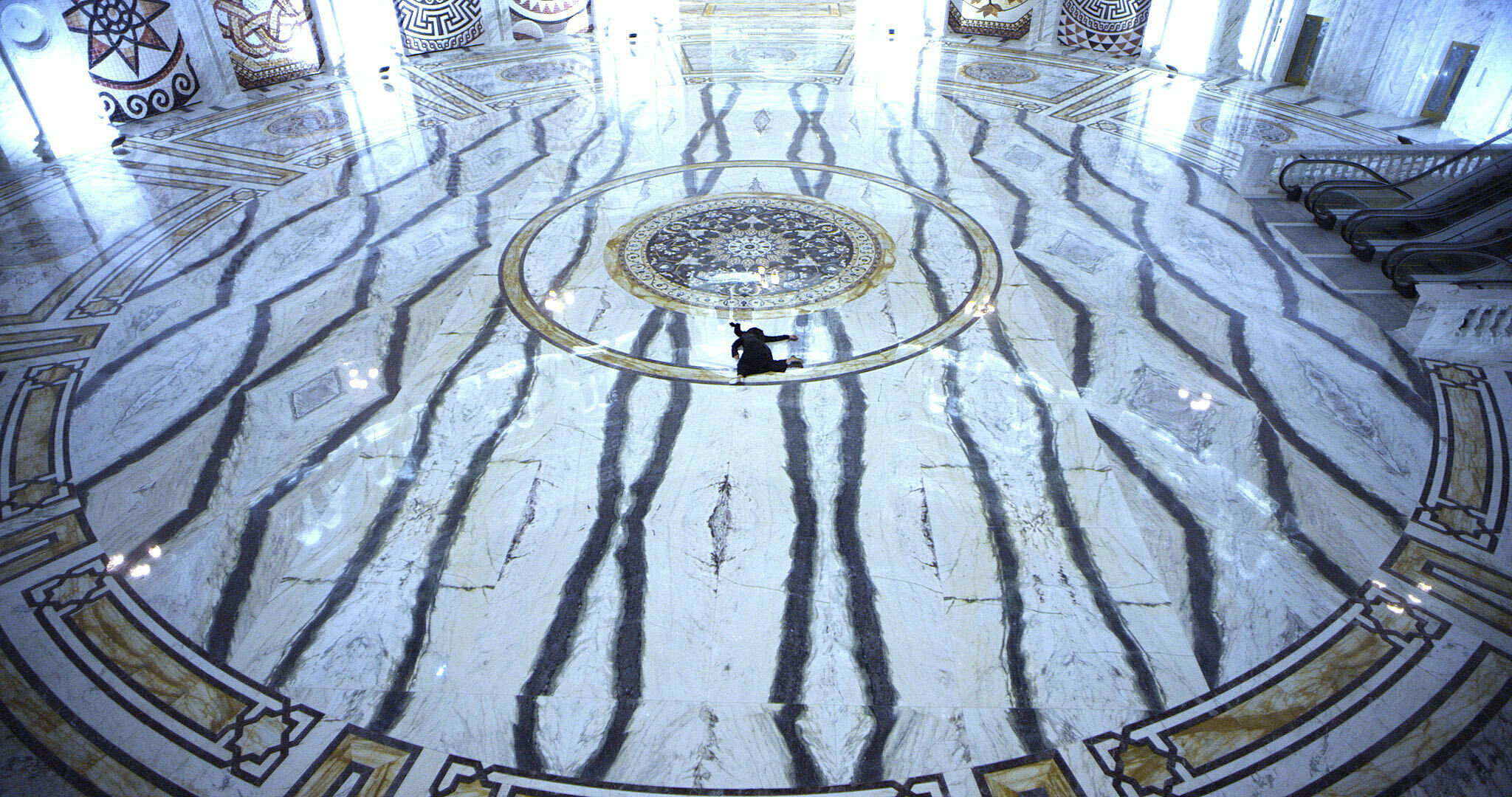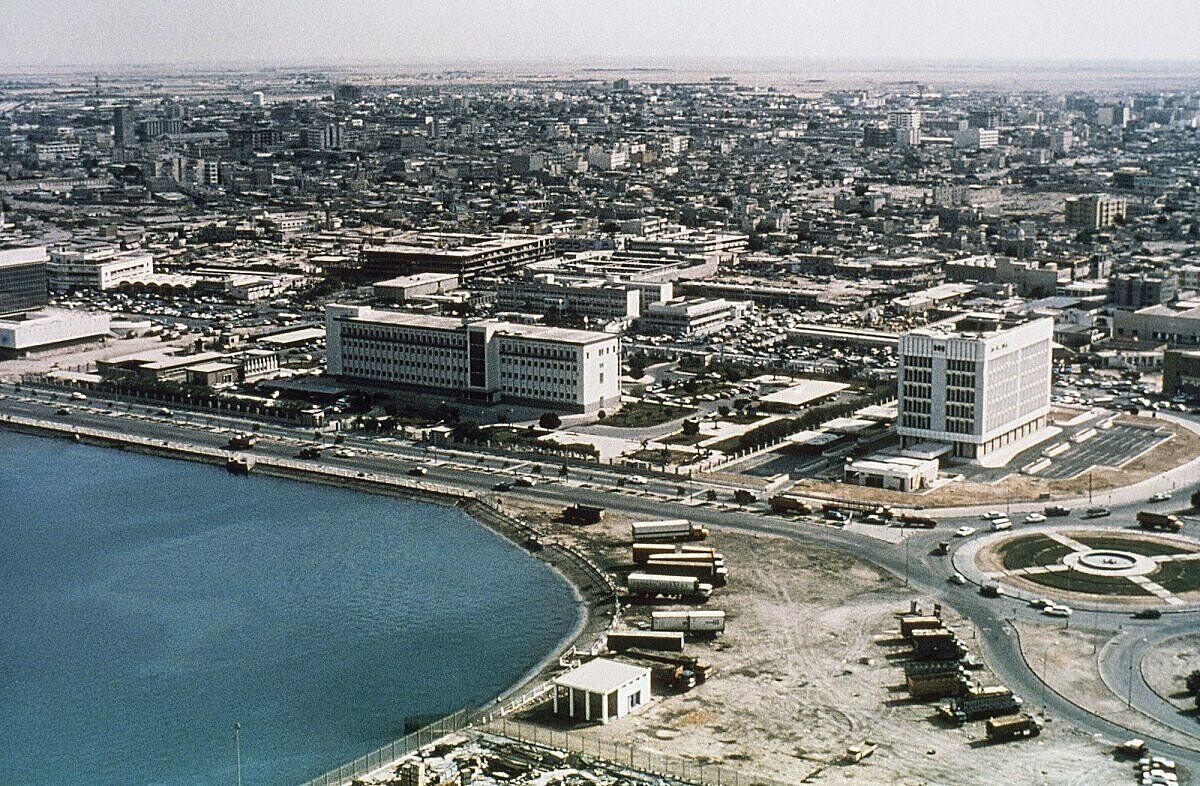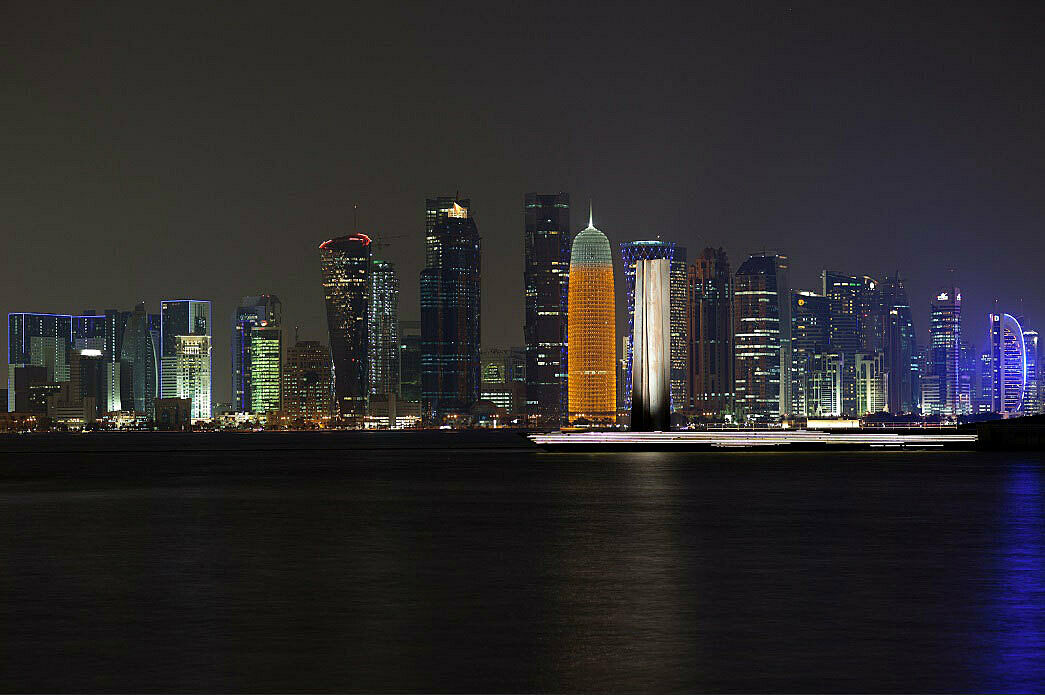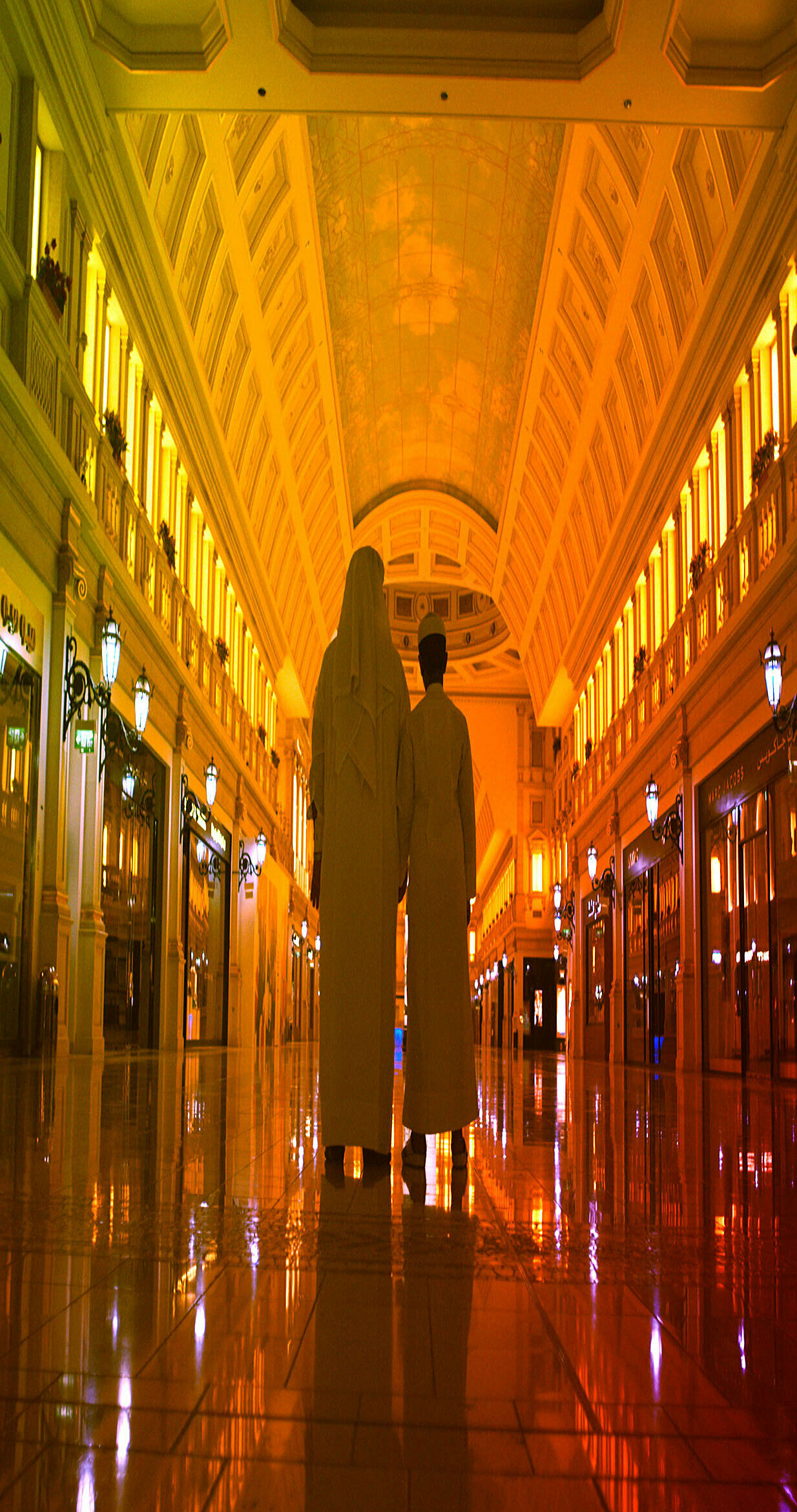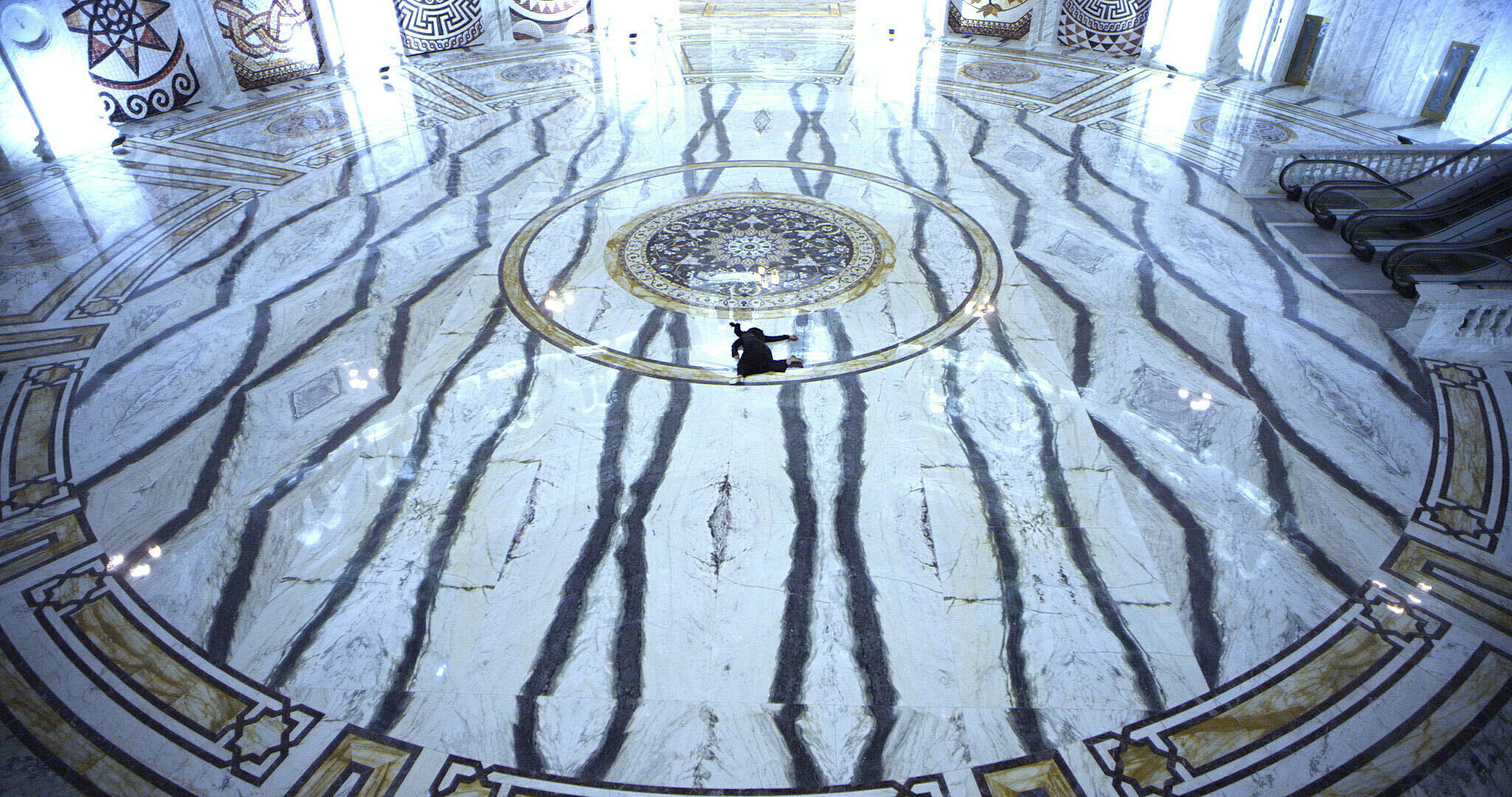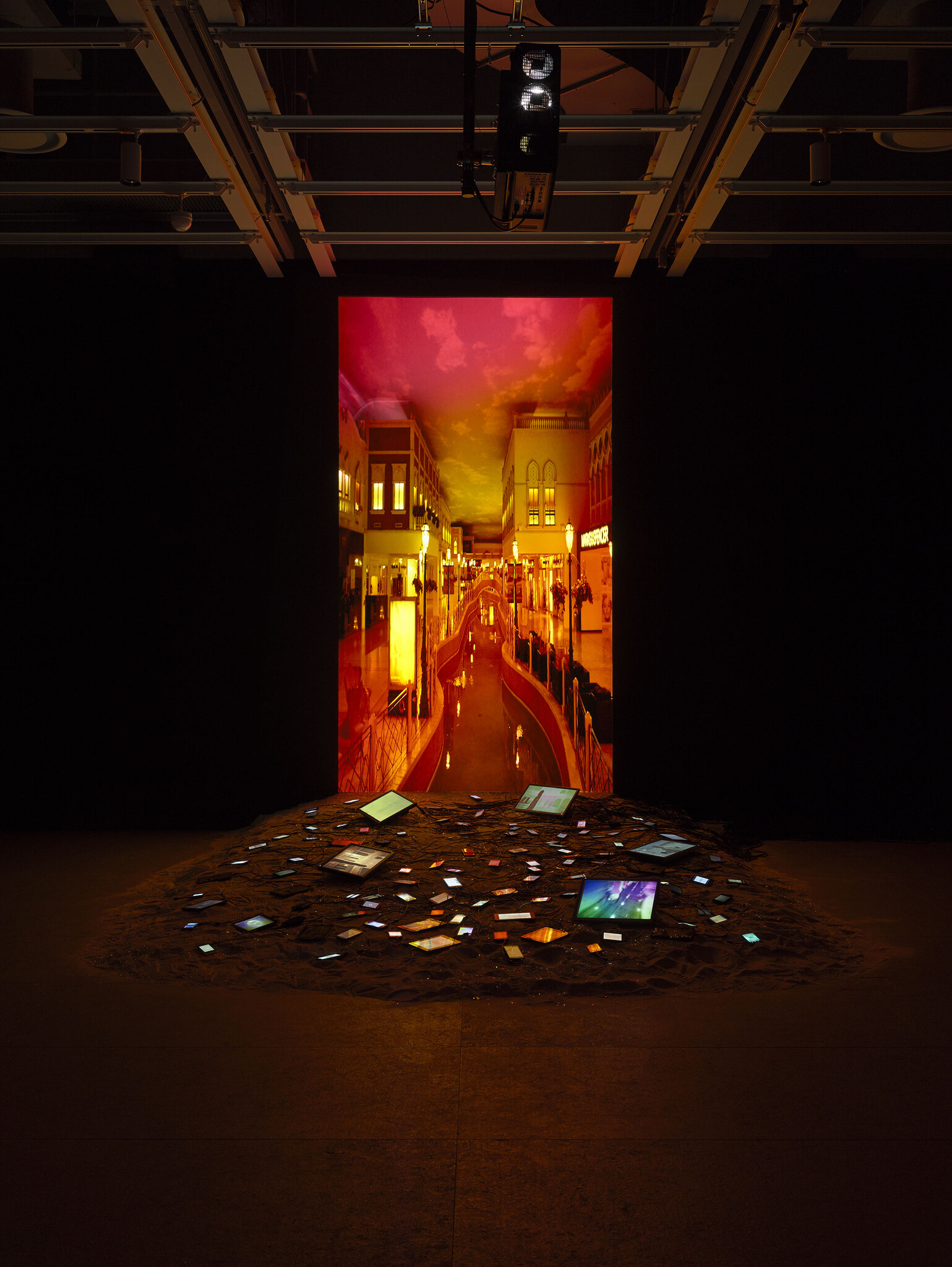Sophia Al-Maria:
Black Friday
Back to the Futurist
An artist, writer, and burgeoning filmmaker, Sophia Al-Maria (b. 1983) brings a nuanced, international perspective to visual culture in the early twenty-first century. Raised in Washington State and Qatar, Al-Maria attended university in Cairo, Egypt, and graduate school in London, where she is currently based. Through her work she addresses the dramatic transformations that have occurred in the Arabian Gulf region in the last two decades, examining the societal shifts in countries like Qatar and the United Arab Emirates (UAE) during a time when their oil wealth–fueled economic growth propelled them onto the world stage, providing them with a greater voice in global culture, finance, and military policy. Additionally, her feature film, still in progress, engages the rich legacy of Egyptian cinema and brings a feminist perspective to so-called “rape-revenge” B movies.“Sophia Al-Maria: Virgin with a Memory,” exhibition description, HOME (Manchester, UK), 2014.Al-Maria is the rare young artist who, cognizant of her contemporary moment, is capable not only of evoking the emotional tenor of her times through her work, but also of articulating the conditions of an entire region by weaving together the cultural, sociopolitical, economic, and environmental issues that affect the Gulf.
Nearly a decade ago, Al-Maria coined the term “Gulf Futurism” to describe life in cities like Dubai and Doha, where great oil wealth brought with it unprecedented urban development, conspicuous consumption, and the embrace of technology as well as the concomitant issues of inequality, labor, and environmental devastation, entrenched religious fundamentalism, and the erasure of history.While the first published account of “Gulf Futurism” appeared in Dazed Digital in 2013, Al-Maria had been using the term and developing the idea while studying at Goldsmiths, University of London, at the end of the first decade of the 2000s. Many of its core ideas, though not the term itself, can be found in her self-published book, The Gaze of Sci-Fi Wahabi (2007). The text can also be found at scifiwahabi.blogspot.com.Cities in the Gulf region have grown at an astonishing rate. Doha, for example, was a modest town in the early twentieth century, known for its fishing and pearl industries. However, since 1971, when Qatar gained independence from the United Kingdom, the capital has grown into a significant urban center, complete with art museums designed by architects I. M. Pei and Jean-François Bodin as well as a new national museum by Jean Nouvel that is currently under construction. This urban transformation has not been without consequences. The “new” Doha has been (and continues to be) built largely by migrant laborers, who toil under harsh conditions without a path towards citizenship, and paid for by the extraction of fossil fuels, which when burned release carbon dioxide—the main driver of climate change—into the atmosphere. Additionally, after centuries of nomadic life that covered the Arabian Peninsula, the Bedouin tribes have settled in cities accepting the national boundaries drawn after the departure of the British from the region. In an article for Dazed Digital, Al-Maria and musician Fatima Al Qadiri cite numerous examples of Gulf Futurism including motorcycles customized with lights to look like vehicles from the movie TRON (1982); the outer space–aesthetic of architect William Pereira, in particular his techno-ziggurat design for the Sheraton Hotel in Doha in the 1980s; Werner Herzog’s conflation of the Kuwaiti oil fires lit during the first Iraq War with a science-fiction narrative in his film Lessons of Darkness (1992); and a 2008 proposed master plan for the Masjid Al Haram in Mecca that could accommodate over two million pilgrims at once and further the destruction of historic sites surrounding the Kaaba.“Al Qadiri & Al-Maria on Gulf Futurism,” Dazed Digital (2013). On the destruction of historic sites in Saudi Arabia, see, for example, Ziauddin Sardar, "The Destruction of Mecca," New York Times, September 31, 2014.
For the Gulf region’s Bedouin community—from which the artist in part descends—the changes were particularly acute. The artist describes their experience as “one of the most ancient ways of living [coming] head-on against extreme wealth and capitalism—glass and steel against wool and camels.”Karen Orton, “The Desert of the Unreal,” Dazed Digital (2013).And yet, even as small cities and villages developed into renowned international hubs within the span of a lifetime, the population adopted consumerism and technology quickly and with an air of ambivalence. “Instead of becoming alienated by this technology or rejecting it,” Al-Maria has written, “the Gulf . . . [in the 1990s and early 2000s] simply shrugged, maintaining an indifference without viewing the riches, the towers, [the] media-city, or the jawal [mobile phone] as sensational or spectacular.”Sophia Al-Maria, The Gaze of the Sci-Fi Wahabi (Doha, Qatar: Published by the author, 2007), 44.Technology, along with late capitalism and its attendant consumerism, entered daily life without triggering seismic shifts in society.
These days, a sense of flux is present in the Gulf region along with a feeling of institutional entrenchment. The GCC artist collective—of which Al-Maria was a part during its founding year (2013–14)—recently described the paradoxical experience as “rapid acceleration, the corporate ‘mall-ification’ of this region, which is spiraling out of control. The ‘Dubai-ification.’ Every time you go back there are new words, new practices. Your grandma is on Instagram. You can’t keep up. . . . But then there are parts of the region that just won’t change. . . . the Kuwaiti government started using e-mail, for internal purposes. Everything will probably get printed out anyway, and stamped. And that’s part of what’s interesting too, these governments and bureaucracies are capable of such scale and yet are still mired in the Jurassic trappings of bureaucracy.”Christopher Y. Lew, “The Aesthetics of Nation Building,” Interview with GCC. DIS Magazine (2014).However, some monarchies in the region are also seemingly preparing for the challenges ahead. Saudi Arabia’s recently announced Vision 2030 initiative lays plans for a post-oil future and the UAE’s newly appointed minister of state for happiness is intended to help maintain stability in the country.
For Sophia Al-Maria: Black Friday at the Whitney—her first solo exhibition in the United States—Al-Maria has created two works that together serve as an immersive video installation. Black Friday (2016) is a projected video that seems to emerge from The Litany (2016), a shimmering mound of used electronic devices, glass, and sand. Featuring primarily empty malls in Doha, Black Friday offers a moody, sinister take on shopping. Designed at seemingly impossible scale with incredible heights, the malls featured in the video appear as dizzying temples dedicated to artifice and capitalism. An unseen narrator declares the mall as “where the glamorous heart of evil is born” and the video depicts it as a place of entrapment and confusion, complete with faces blurred beyond recognition; a parent and child strolling hand in hand, seemingly lost among the shuttered shops; a figure dressed in black walking in circles; and others collapsed on the floor as if left for dead. Meanwhile, The Litany is littered with used smartphones, tablets, and flat-screen monitors—a physical enumeration of the brands and products that, when new, seduced us but have now been cast aside as old junk. When exhibited in tandem, Black Friday becomes, to Al-Maria, “an austere flame” rising from the pile of digital embers that make up The Litany.Sophia Al-Maria, phone conversation with the author, May 27, 2016.The two works serve as a cold altar to consumer culture and the malls that embody it.
An American invention, the shopping mall is a ubiquitous form of architecture that rarely reflects the geographic or cultural specificity of its location. “I can’t tell if I’m in Hong Kong or L.A. or Dubai half the time I walk into a mall,” Al-Maria has said. “And that happens more and more these days because the mall is the dominant structure of a certain class group of which I am part. I literally find myself in malls whether on holiday or on my way home from work or on a weekend even and I am frequently confused as to how I even got there. It’s a place of weird pilgrimage in an era where to consume is to absolve yourself.”Nicolas Nova, “Futures? An Interview with Sophia Al-Maria,” Pasta and Vinegar (blog) (October 26, 2014).The sense of disorientation is inherent in their design. Built to maximize the time shoppers will spend inside, malls also make use of light and sound to confuse patrons, luring them deeper and deeper into the complex. Often called the Gruen Transfer, after Austrian émigré Victor Gruen, the architect of the first indoor mall, the theory is that “shoppers will be so dazzled by a store’s surroundings that they will be drawn—unconsciously, continually—to shop.”M. Jeffrey Hardwick, Mall Maker: Victor Gruen, Architect of an American Dream (Philadelphia: University of Pennsylvania Press, 2004), 2.The mall’s labyrinthine design, like a casino’s, can also elicit feelings of “happy imprisonment,” according to cultural historian Norman M. Klein, in which one has “infinite choice, but seemingly no way out.”Norman M. Klein, The Vatican to Vegas: A History of Special Effects (New York: New Press, 2004), 338.”
For Al-Maria, the mall is a link between the United States and the Middle East. She sees the mall—and shopping in general—as “being a weirdly neutral, shared zone between cultures in this . . . war being fought through screens by the American Right and groups like ISIS.”Sophia Al-Maria, email correspondence with the author, May 10, 2016.While extremists on both sides are pushing for a clash of civilizations, the day-to-day reality in the Gulf and America (and elsewhere) demonstrates a common ideology of consumption where shopping has become an important form of social interaction. Black Friday’s prone figures on the floors and escalators speak to this paradox. Whether they have shopped ’til they dropped or are war-time collateral damage, they are victims of larger agendas in support of or against what the video’s narrator calls these secular temples “illuminated here in metal halide.”
Al-Maria’s inspiration for Black Friday and The Litany extends beyond the Gulf, looking back to the second Iraq War. For the artist, Naomi Klein’s notion of disaster capitalism is a key reference for the video and installation.Ibid.Klein argues that the conflict was a means to install a Milton Friedman-inspired free-market economy in the country. At a time when Iraqi citizens were busy with basic survival, the American occupiers could essentially privatize the country, selling off assets wholesale by counting on “the disorientation of Iraqis, their collective regression, their inability to keep up with the pace of transformation. They were banking, in other words, on the power of shock.”Naomi Klein, The Shock Doctrine: The Rise of Disaster Capitalism (New York: Picador, 2008), 457.In the immediate aftermath of the war, borders were opened and importation taxes lifted, allowing products from around the world to flood in while Iraqi factories remained idle. For Al-Maria, the assemblage of electronic devices in The Litany speaks to the inroads capitalism has made in the developing world and the violence that can occur in the drive to open markets. She has said, “the men in charge of ‘rebuilding’ went about trying to cultivate consumers and failed [in Iraq]. But that [cultivation of consumerism] worked in the Gulf without disaster. Maybe it was already a disaster.”Sophia Al-Maria, email correspondence with the author, May 10, 2016.
Norman M. Klein’s description of the mall is also fitting for the capitalist system that engendered it: one of endless choice and without any escape. And, likewise, Black Friday is a closed loop; Ouroboros-like, the video’s beginning is also its end with automated walkways that appear to go both up and down but lead nowhere, neither to heaven nor to hell. The video captures a mall in limbo, in an unfixed state between near completion and abandonment to ruin. Clad in extravagant marble and stretched to nearly impossible proportions, the structure evokes an anime version of an Italian cathedral. It is a tabula rasa—as the video’s narrator says—“of dreams and of reality and of the future. The future that had already happened. The apocalypse that is already here.”

